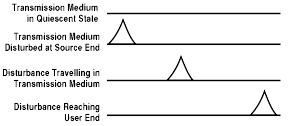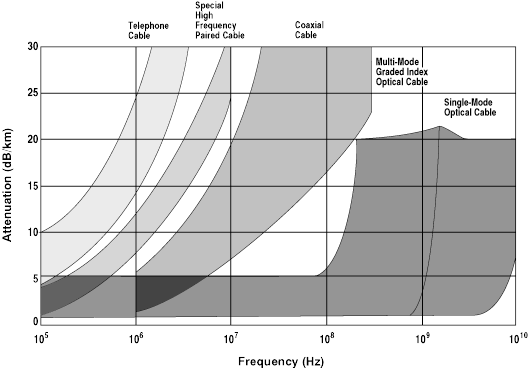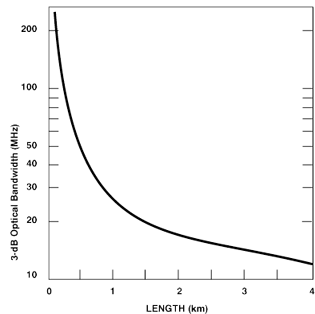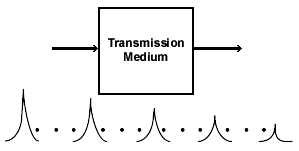The subject of communications really begins with the situation shown in Figure 1-1. Here is an entity called the Source and one called the User- located remotely from the Source. The Source generates Information and the User desires to learn what this Information is:
 However, our attention will only be focused on the case illustrated in Figure 1-2 where the Information is a sequence of binary digits, 0's and 1's, bits. Information in this case is termed data:
 It is absolutely impossible in the real world for the User to obtain the Information without the chance of error. The question then arises as to how to send the binary data stream from Source to User. A Transmission Medium is employed to transport the Information from Source to User. What is a Transmission Medium? A Transmission Medium is some physical entity. As shown in Figure 1-4 it is located between the Source and the User and it is accessible to both.  The Transmission Medium has a set of properties described by physical parameters. The set of properties exists in a quiescent state. However, at least one of these properties can be stressed or disturbed at the Source end. This is accomplished by somehow imparting energy in order to stress the property. This disturbance does not stay still, but affects the parts of the Transmission Medium around it. This disturbance then travels from the Source end to the User end. Consequently, energy imparted in creating the disturbance is thereby transferred from the Source end to the User end. Finally, this disturbance or stressed property, can be sensed at the User end. It can be measured or received. This propagation of a disturbance by the Transmission Medium is illustrated in Figure 1-5.  Examples of various kinds of transmission media:
The entire situation with data communications then devolves to the model illustrated in Figure 1-6. Here the Source is generating bits as Information. The User wants to learn the identity of this Information, these bits. The entities used to get the Information from the Source to User are the Transmitter, the Transmission Medium and the Receiver. The fundamental problem of communications is to choose the terminal equipment, the Transmitter and Receiver and to choose the Transmission Medium so as to satisfy the requirements for a given Source-User pair.

The fundamental problem of communications then becomes a design problem.
The combination of Transmitter, Transmission Medium and Receiver is
termed the communication link or the data link. The disturbance launched
into the Transmission Medium by the Transmitter is usually referred to as
the input data signal.
The resulting disturbance at the Receiver is termed the output data signal.
In the context of our discussion the fundamental problem of communications
is to design a data link appropriate for connecting a given Source-User pair.
There is really only one way to overcome these limitiations and that is to sue fiber optic media in which the losses, primarily due to collision other atoms within the tranmission media, are greatly minimized. The figure below shows loss (attenuation) per km on the Y axis as a function of the frequency of the signal. Ordinary telephone cable, for instance, can't even transmit high frequencies and its subject to significant losses even at the highest frequencies it can tansmit. Fiber optics (far right of the diagram) not only allow very high frequency transmission, the losses remain relatively low at all frequencies of transmission. Its magic.
 In addition, fiber optics suffer relatively low attenuation losses meaning that signals can be propogated over relatively large distances:  Fiber optic cable is the unchallenged winner in the Transmission Medium sweepstakes when it comes to attenuation, interference and bandwidth. |

